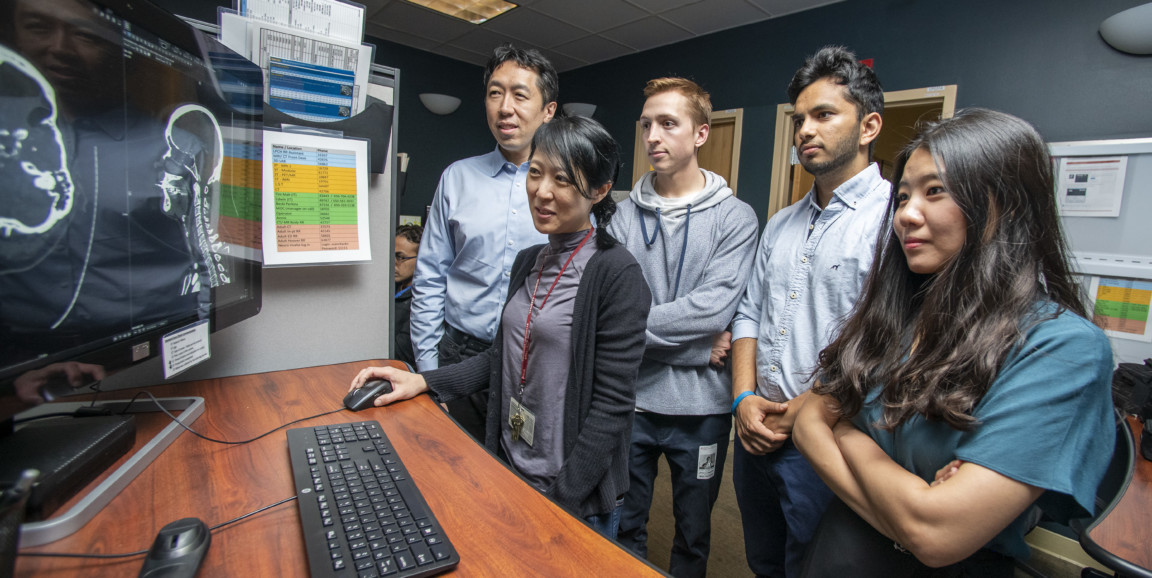A future where artificial intelligence is part of medical care may not look all that different. That's one lesson we can take away from a new AI tool, made by Stanford University researchers in computer science and medicine, which is designed to help clinicians identify brain aneurysms.
The work appears in JAMA Network Open.
Built around an algorithm called HeadXNet, the tool looks through head scans -- made using computed tomography angiography -- and for every voxel, the 3D version of a pixel, decides whether or not there is a sign of an aneurysm.
At the end of this process, a semi-transparent red overlay shows up on the scans everywhere that HeadXNet predicts there is an aneurysm. This visualization is purposefully subtle; a way to encourage clinicians who use HeadXNet to give those areas a closer look.
"Search for an aneurysm is one of the most labor-intensive and critical tasks radiologists undertake," said Kristen Yeom, MD, associate professor of radiology and co-senior author of the paper, in a Stanford press release. "Given inherent challenges of complex neurovascular anatomy and potential fatal outcome of a missed aneurysm, it prompted me to apply advances in computer science and vision to neuroimaging."
In order to see their tool in a realistic work flow, the researchers put a lot of time and effort into integrating it within scan viewers, which radiologists currently use. Eight clinicians tested it by evaluating a set of 115 brain scans for aneurysm, once with the help of HeadXNet and once without. The tool improved clinicians' ability to correctly identify aneurysms at a level equivalent to finding six more aneurysms in 100 scans that contain aneurysms. It also improved agreement between the clinicians.
There are many directions the researchers could take their work from here. Yeom has suggested the possibility of altering the algorithm to identify aneurysms that have burst, a dangerous condition. The researchers are also planning to establish a multi-center collaboration to make AI health care technologies, like HeadXNet, easier to use across different hospitals, which tend to have different hardware, patient populations and imaging protocols.
Given the challenges of making AI work in all these different situations -- and the vital importance of accurate diagnoses -- these researchers think that collaboration between AI health care technologies and clinicians is a particularly promising path forward.
"There's been a lot of concern about how machine learning will actually work within the medical field," said Allison Park, a Stanford graduate student in statistics and co-lead author of the paper. "This research is an example of how humans stay involved in the diagnostic process, aided by an artificial intelligence tool."
Photo of HeadXNet team members by L.A. Cicero




